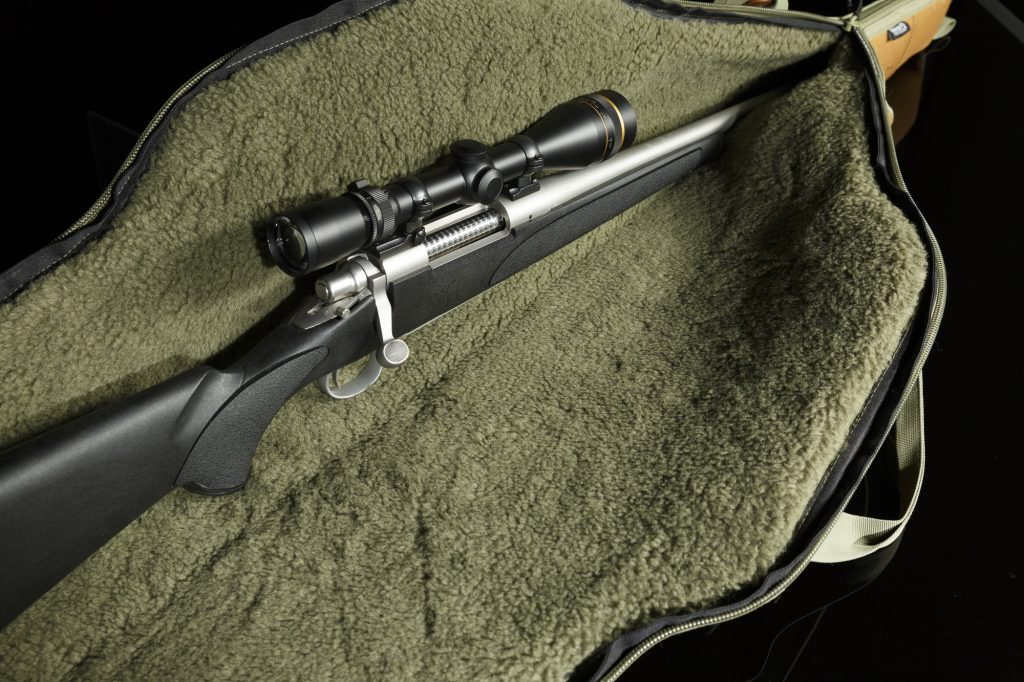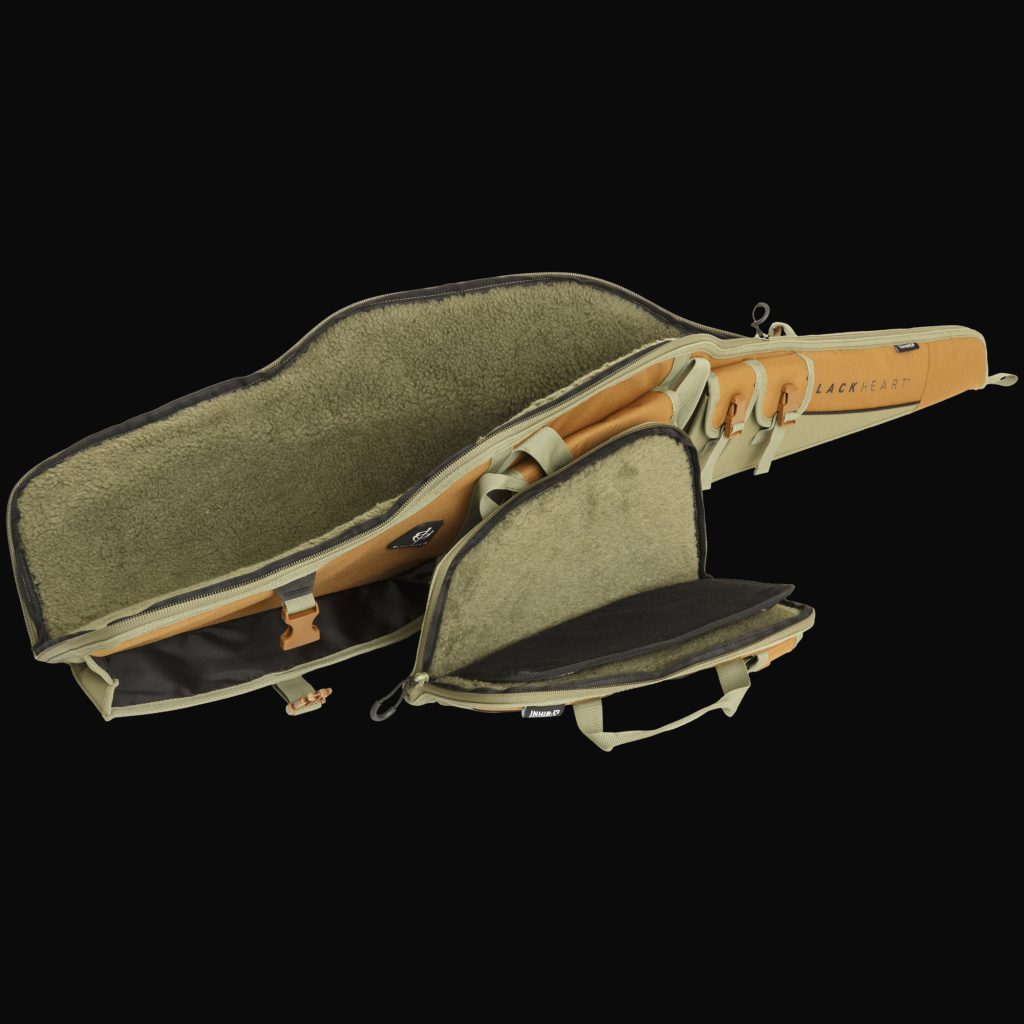4 Steps for Making Sure Your Gun is Ready for Hunting Season

Prepping Your Firearm
As we begin the second half of the year, the hunting season will be upon us before we know it. Successful hunters hit the woods prepared, and that preparation begins well before the season opens.
The longer summer days are the perfect time to prep your firearm for the upcoming hunting seasons. If you are planning a western hunt, many of which open earlier in the year, your prep work needs to start sooner, rather than later.
Your success in the field depends heavily on the preparation and performance of your firearm. Without attention to detail and proper preparation, you will have a difficult time filling tags in the Fall.
Continue reading to learn more about the 4 steps for making sure your gun is prepped and ready for the upcoming hunting season.
Step 1. Clean Your Firearm
Hopefully you gave your firearm at least a good “once over” before storing it after the hunting season. Ideally, you gave it a thorough cleaning, but realistically, life gets hectic after hunting season as the holidays roll around and sometimes these things are delayed and then forgotten.
If you aren’t a person who regularly shoots during the offseason, and your firearm has sat in the safe or gun cabinet since your last outing, take the time during the final weeks of summer to get your gun out and give it a thorough cleaning. If you hunted in inclement weather during the last deer season, you may see some signs of moisture damage on the gun that are only surface-deep and can be remedied with a bit of TLC.
Obtain some cleaning supplies from your local gun shop or outdoor retailer and apply them to the firearm following the manufacturer’s instructions. Focus on the external parts of the firearm such as the barrel and stock, and then give some extra to the moving parts of the gun such as the action and the trigger assembly.
Using a dry Teflon based lubricant on these areas is a good way to create smooth operation of the firearm. Avoid excess when applying lubricant to these areas, and avoid cheap lubricant products; since over-application and inferior products may seem to help in the short term but will lead to residue build-up on the gun’s action and cause further issues down the road.
The bore of your firearm also can benefit from a good cleaning, and this can help to increase the accuracy and consistency of your firearm. Obtain a cleaning rod that is specific in size for your caliber and get some patches and cleaning solvent that is specifically designed for firearms.
Most minor cleaning jobs can be completed without disassembling your firearm, but if you have obtained an old rifle that needs restoration work, or its been a long time since your guns last cleaning, a more thorough job can be done by taking the firearm down and cleaning its components individually.
If you aren’t an experienced gunsmith, you can spend a few dollars and take your firearm to a gun shop to have it cleaned professionally. If you opt for this route, it’s a good idea to get your gun into the shop soon, since the rush prior to gun hunting season may make it difficult for the shop to get your gun maintenance completed before the season opens.
If you are going to embark upon your first DIY cleaning project that will involve disassembly and reassembly, a good idea is to have a designated area, such as a large table, with a sheet or blanket laid out so that all the pieces can be laid out and accounted for.
As you begin your disassembly, use a camera or your phone to take photos of the gun at each step of the process so that you have a reference for the parts and where they go when you reassemble the gun.
Step 2. Sight-In Your Firearm
Responsible hunters know that they owe it to their quarry to ensure that their gun is sighted in prior to hitting the woods. This is another good reason to start with your firearm prep earlier in the summer while days are longer.
If you work a full-time job and have other family obligations on the weekends (as most of us do), longer days give you the opportunity to capitalize on evenings in order to sight in your firearm.
By the time that Fall rolls around, daylight is at a premium and it may not be light enough after you return from work to get in an evening practice session.
Additionally, if your hunting property is the location where you sight in your firearm, waiting until right before the season opener is a good way to disturb the property and alter game patterns with a lot of irregular and uncommon noise coming from your gun range.
It is also important to sight in your firearm after you’ve given it a thorough cleaning. Cleaning your gun is a good thing, and it will preserve the value of your firearm, but it will also make your bullet’s trajectory change, so you need to check if sight adjustments are required after a good cleaning.
Furthermore, be sure that none of your scope mounting hardware became loose during the previous hunting season. If you need to tighten scope rings, be sure to do this before you sight in your firearm.
Sight in your gun based on the area that you are hunting. If you are going on a western hunt, you will zero your scope at a different range than if you are hunting whitetails in the thick timber of the eastern United States.
In heavily timbered areas, it can be difficult to see more than 100 yards, let alone find a clear shooting lane at that distance, so extremely long-range shooting is not the norm. In this case, it is advisable to sight your gun in for a 100-yard shot.
In most cases, your bullet will still be rising at this range, so when shooting at game at shorter distances, your bullet may actually strike its target lower than your aiming point. This difference will be minimal, however, and if you are aiming on your quarry correctly, your shot will still be within the animal’s vital area.
Likewise, with most rifle calibers and common game loads, the bullet will drop about an inch or so at 200 yards, which still allows you to aim without needing much drop compensation out to this range. If your hunting area allows for ethical shots of a longer range than 200 yards, you should practice these shots with your firearm, and also consult a ballistics chart to have a good idea of how much your bullet is dropping at further yardages.
If you live in a state, or hunt in an area, that allows shotgun hunting only, the ranges that you sight in your firearm will obviously be different. Your effective range will also change dramatically if you are using a shogun with a rifled barrel versus one that has a smooth bore.
Shotguns that shoot rifled sabots have a longer effective range, and you still might sight in your shotgun to 100 yards. However, be aware that the drop at 200 yards and the gun’s consistency will be much different than that of a flat-shooting rifle caliber.
If you are shooting a smoothbore shotgun with slugs, or utilizing buckshot where legal, understand that your effective range will likely be under 100 yards.
Where buckshot is still legal, some deer hunters use a combination of slugs and buckshot when hunting with a smooth bore shotgun.
If you use buckshot, it’s a good idea to set up a large target that will allow you to pattern your shot at various distances.
Step 3. Weatherproof Your Firearm
After you get your gun cleaned and sighted in, it is a good idea to give it some extra protection from the elements. Big game seasons occur during a time of year when weather patterns are unpredictable, and the likelihood that you will be using your gun in some inclement weather is high.
Be sure to maintain your firearm’s value and operational efficiency by making sure that it is properly prepared for all weather conditions. There are various products you can research and find for this purpose, and some firearms require more weatherproofing than others.
For instance, a firearm with a synthetic stock and a stainless barrel may be less susceptible to weather damage than a firearm with a natural wood stock and a blued barrel. If you have a firearm with a wood stock, and it is showing signs of wear, it is important to seal the stock appropriately. This can be done by applying a very thin layer of oil to the stock to fill the end graining and help to repel moisture.
Additionally, products are available, such as wax-coated rags, that will help you to apply an additional layer of waterproofing and protection to a wooden stock. Wooden stocks that aren’t properly sealed can absorb moisture and devalue the gun over time. This moisture can also cause a stock to swell and affect the gun’s accuracy. You may also consider obtaining waterproof optics, if your gun does not already have that accessory. A waterproof scope gives you some peace of mind when hunting in wet snow or rainy conditions.
Investing a few dollars in scope caps is also a good idea. This is a convenient add-on that will help to ensure that your scope remains unobstructed and your optics are clear when you raise your firearm to take your target buck. Having clear and reliable optics is another ethical practice to ensure that you are able to place an accurate shot on your target.
As hunters, it is our job to do everything in our power to guard against wounding an animal and having a properly weatherproofed firearm and optics is one of those steps that should be taken.
Step 4. Get a Durable and Reliable Gun Case
All of your preseason efforts and planning will be for naught if you don’t have a good means of storage for your firearm. When in long-term storage, keep your firearms in a climate-controlled area of your home, or a safe equipped with a dehumidifier.
If your safe doesn’t have a dehumidifier, or the accommodations to add one it is advisable to purchase bags of silica xerogel to draw moisture away from your stored firearms. When in short or medium-term storage, a reliable case is a necessity.
The case you use for your valuable firearm should be made of rugged construction, and have ample padding to absorb any shock the firearm sustains when in transit. You want to avoid concussions to both your firearm and scope to ensure that your efforts in sighting the gun in are preserved by the time you get to the field.
The interior of a gun case should be made of a material that will not cause damage of wear to the firearm, and ideally, the case will provide some protection from the elements in terms of moisture resistance and a water repellent face fabric.

For example, our Vital Shotgun and Scoped Rifle cases feature high-pile fleece lining that protects the firearm’s finish and is infused with a silicon-based lining, called INHIB-X, that helps to repel moisture.
Lastly, consider a case that has some extra storage compartments, so that you can take other necessities like extra magazines, ammo boxes, and even a few gun cleaning supplies in case you encounter some bad winter weather conditions during your hunt.
Time to Hunt
Your hunt’s success begins with the steps you take in your preseason prep. Be sure to consider the list above to enter the woods with added confidence this Fall.
The above steps will help you to ensure that your firearm is operational and highly effective, as well as protect your investment for years to come.
For more information about firearms and the unparalleled equipment that Blackheart has to offer, be sure to browse the rest of our website and check out our new line of premium firearms cases.
Finally, make sure to connect with us on Facebook, Instagram, and YouTube to stay up to date on the latest product offerings, giveaways, and exclusive BlackHeart content.


Leave a Reply